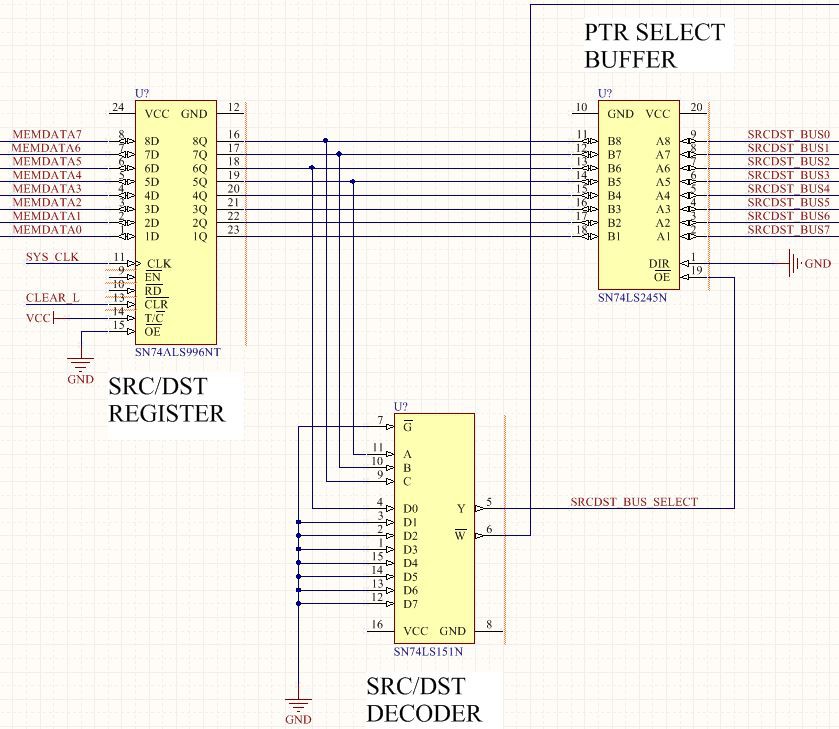tossed out all my wired logic. So the next step was how to replace it with TTL logic. I have one circuit which is particularly irritating. I want to decode the SRC/DST register to know if I need to put that onto the SRC/DST bus, or the POINTER ADDRESS instead. In VHDL, it's very easy:
dstAddr <= ptrReg when dstR=PTRDAT else dstR;
But I need to do the dstR=PTRDAT logic with chips. I want to do this in only one chip. This proved tricky. My address is x08 or 0x00001000. But I couldn't get the logic down to only one chip (NOR or NAND). There's just too many inputs. So I went with a different approach.I have a lot of free register space, so I decided to use this to make my logic simpler. I'm going to use the address space 0x20-0x2F to be my new pointer data address. This really means my address is 0b0010XXXX. This means I only need to look at the upper 4 bits. This still didn't simplify it enough to put it in one NAND/NOR chip. So I decided to use the MUX method of logic. I chose a 74LS151 8:1 multiplexer chip. Three of my inputs drive the select lines and the fourth is wired to one input. All other inputs are tied low. And there's a bonus inverted output, so one output goes the select the SRC/DST register and the other goes to select the POINTER ADDRESS register (off screen).

This should be significantly faster than the wired-OR version with transistor inverters (haven't done the math on that yet). And it'll look better and be more true to the TTL goal. If I needed to decode a single address within the 0x20-0x2F space, I could put a second mux in and chain the enable input.
Discussions
Become a Hackaday.io Member
Create an account to leave a comment. Already have an account? Log In.